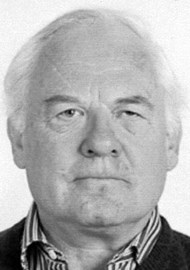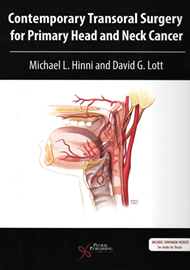This is a volume containing 16 chapters and indexed over 251 pages which covers the topic of transoral surgery (TOS) edited by Drs Hinni and Lott from the Mayo Clinic Arizona, Phoenix, USA. The chapters cover the topic of TOS and can be commented upon as four sections:
- Introduction (four chapters) which relates the history, anatomy, instrumentation and general techniques, margin analysis and pathology
- Application of TOS by anatomic site (eight chapters) covering oral cavity, oropharynx, larynx and hypopharynx, chemoradiation failures
- Complications of TOS (one chapter)
- Outcomes (three chapters) comparison of TOS vs. open surgery vs. chemoradiotherapy, functional, and reconstruction techniques for TOS defects.
Dr Hinni is Professor and Chair of the Otolaryngology – Head and Neck Surgery, Department of Mayo Clinic Arizona, and with Dr David Lott Assistant Professor, Director of the Voice programme edited this book, Professor Steven Zeitels contributed on the history of TOS, other cited contributions were six of his Mayo colleagues, Professor Bruce Haughey from Washington University in St Louis and four of his colleagues, and Professor Mark Taylor from Dalhousic University, Halifax, Canada, complete the contributor line-up.
Chapter 2 discusses that anatomy of the head and neck required differs from the traditional taught anatomy which was from the ‘outside-in’, the anatomy required for TOS is described best considered from ‘inside-out’. Mastering this inside-out is essential, difficult to recognise and is even more difficult to teach. Understanding inside-out anatomy is crucial to the safely performing transoral endoscopic surgery. Emphasis is also made of the crucial aspects of tumour exposure and ultimate respectability the 10 Ts (Teeth, Tongue, Tilt, Transverse dimension, Tori, Trismus, Treatment, Tumour, Tethering and Time).
Chapter 3 discusses the environment, equipment (retractors and laryngoscopes), transoral robotic surgery (TORS), transoral laser microsurgery (TOLS) and the types and use of microscopes.
Chapter 4 discusses margin analysis and pathological considerations – this chapter is written by two surgeons to the exclusion of a pathologist! It has good comments on the surgical approach using a trans-tumour approach, tissue shrinkage, margin mapping (ink marking by the surgeon of the exposed tumour) – essential is to design and develop new pathways of communication among the surgical, nursing and pathology teams.
The chapters (5–10) on anatomic sites and TOS follow a standardised format, which the reviewer found easy to read and follow, and recent references. However there was some repetition of descriptions (Table 2-1 repeated Table 6-1), complications and outcomes, which would be discussed later in the text. Maybe this was intentional or occurred by accident! Chapter 11 complications commenced theoretically and finished with a discussion based upon their own experience – to be commended.
Chapters 12 – 14 could have been amalgamated to deliver a simpler and punchy message, rather than each author group, radiation oncologists vs. surgeons vs. surgeon, each advocating their specialty approach, surgery vs. non-surgery, to tumours located at differing head and neck sites. Again Chapter 15–16 could have been amalgamated, summarising the causes of good and poor or unsatisfactory functional outcome, identifying which defects created, resulting from tumour excision, should be surgically reconstructed primarily and which could be delayed and rehabilitated by secondary surgery or may functionally be rehabilitated by the passage of time or the intervention of expert specialist head and neck speech and language therapists.
Overall this is an excellent primer textbook for the trainee or clinician embarking on a surgical career which includes TOS procedures for the management of patients with head and neck cancer. The information presented reflects that currently practised at the Mayo Clinic Arizona and Washington University in St Louis, both based in the USA. Each chapter is supported by current published literature, as recent as 2013. Uniformity of author listing to include the first three authors or all authors if there are four or fewer has been applied inconsistently within and between chapters.
Should this book, and I suspect it should, be updated with a second edition, then it will include a more comprehensive description of techniques employed and developments yet to be invented, present the results of outcomes not only survival, but functional and effects on quality of patients’ lives. To achieve this, the contents of the chapters will require more national and international expert contributions to augment the evidence gained and support the use of TOS as the preferred surgical treatment for suitable patients and fulfilling the needs of future TOS clinicians.





